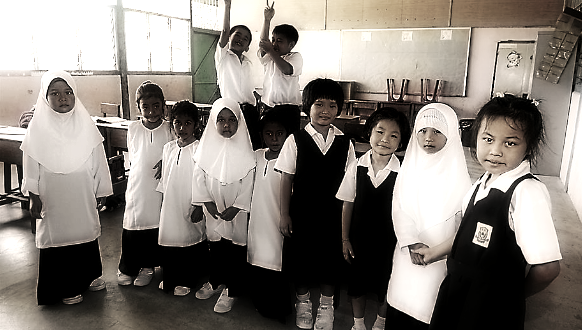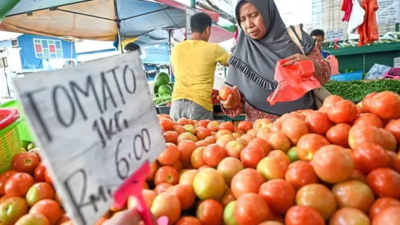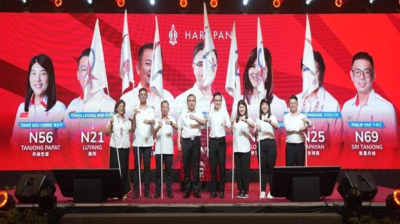By Tay Tian Yan, Sin Chew Daily
Many years ago, when my daughter was in Year 1 at a SJKC in PJ, I asked her who her best friend was.
"Ariff."
Ariff was a Malay boy in her class.
For a young Chinese girl living in an overwhelmingly Chinese neighborhood with hardly any cross-race life experiences, her first good friend at school was a Malay boy!
The answer did surprise me, but it also made me proud.
Ariff was sent to a completely new environment to study. He obviously had problem adapting to the change initially, especially when it came to communicating with his classmates. He found it hard to merge into the SJKC environment and had few friends.
I encouraged my daughter to make friends with Ariff, help him overcome the feeling of alienation at school and offer assistance in his schoolwork.
Sure enough Ariff had enriched my daughter's skill in Malay language, and their relationship helped deliver her out of the single-race confines she was so much accustomed to, and learn more about the country's pluralistic cultural environment.
I later found out that Ariff's father had sent him to a Chinese school because of the better learning environment, more dedicated teachers and more disciplined students there, not to mention the ability to learn an additional language.
We later lost contact with Ariff after so many years. I hope his studies at the Chinese primary school would give him an edge over his contemporaries in his future academic or career pursuits, and hope his personal experiences at SJKC would help spread more positive. liberal and multiculturalism values in his own community.
Back in those years non-Chinese students were a rare minority in SJKCs, especially the urban ones.
Things have changed now. Education ministry senior minister Mohd Radzi Md Jidin said the ratio of Malay students at SJKCs had increased to 15% in ten years, and in some of the rural Chinese schools, non-Chinese made up more than half of the student population and had kept the schools afloat.
Perhaps some people concerned about Chinese education will feel uneasy with such a trend, worrying that the nature of SJKCs will gradually change over time, including the replacement of Mandarin as the medium of teaching, non-Chinese taking up key administrative positions at school, halal food only at school canteen, and non-Chinese parents helming the PTAs, among other things.
Some even argue that while the Chinese community has worked so hard to raise funds for SJKCs, non-Chinese students get to savor the fruit of their hard work.
Well, their concerns are not completely groundless, but time has changed, and so must SJKCs. The development of Chinese primary schools must go in tandem with the moving times.
Chinese education must adapt to the changes in the environment. While we must persist in keeping Mandarin as the medium of teaching at SJKCs, some others can actually change to cater to the need of the increasingly multicultural school environment.
To lure more Malay parents to enroll their kids at SJKCs is both a realistic and foresighted need.
Perhaps several years down the road the ratio of non-Chinese students at SJKCs could reach 51% and not just 15%.
When more and more Malay students are enrolled at SJKCs, there will be no more excuses for the conservative Malays to accuse Chinese schools as a hotbed of Chinese chauvinism, nor can they brand SJKCs as cradle instilling racist thinking into the students.
The walls will be shattered when more and more Malays learn the Chinese language and culture. Multiculturalism will eventually edge out monoculturalism as the mainstay of this country.
When more and more Malays speak Mandarin in their day-to-day lives, the language will no longer be exclusive to the Chinese community.
It is my hope that one day Dongjiaozong and local Chinese associations will not be the only groups that stand up to defend Chinese education in Malaysia, but we also see Malay organizations and individuals who love and appreciate the Chinese culture.

ADVERTISEMENT
ADVERTISEMENT


































